Table of contents
Vanilla powder ( organic) consists of the dried and ground fruit capsules of vanilla (spice vanilla, Vanilla planifolia). The vanilla pods are fermented and usually blanched during production and are no longer raw.
Using vanilla powder in the kitchen:
What is vanilla powder? / What is ground vanilla? Vanilla powder is made from the ground fruits of the spice vanilla (true vanilla). Ground vanilla is easier to use in cooking and baking. The sweet, spicy taste refines desserts in particular. Ground vanilla gives desserts such as cakes, puddings, raw fruit desserts, compotes, pancakes, waffles, ice creams or chocolate a special touch. It can also be used to refine jams and chutneys.
Drinks such as tea, milk drinks ( oat drinks, almond drinks, etc.), coffee, hot chocolate, punch, liqueurs, cocktails, beer or cola drinks can be enriched with real vanilla. Vanilla powder is even used in savory dishes such as curry, risotto, vegetable, meat and fish dishes. Some top chefs perfect their tomato salad with spiced vanilla. The aromatic vanilla powder is also used in savory soups. The dosage of vanilla powder depends on individual wishes regarding the strength of the vanilla flavor.
How can you replace vanilla powder? If you don't have any vanilla powder on hand, you can replace it with other vanilla products. How much ground vanilla is needed for one vanilla pod? Half a teaspoon of vanilla powder (approx. 2 g) is approximately the same amount as the pulp of one vanilla pod (scraped fruit capsule). Vanilla extract (vanilla flavoring or vanilla essence) or vanilla paste are also excellent vanilla powder substitutes. If you use vanilla sugar, you should reduce the amount of sugar in the rest of the recipe.
In addition, tonka beans have an intense and sweet aroma reminiscent of vanilla, which is why they are often used as a substitute for ground vanilla.
How many grams does a vanilla pod weigh? The weight can vary considerably depending on the size and water content. A 19 cm long vanilla pod weighs around 3.5 to 4.5 grams.
Vegan recipe for vanilla sauce with vanilla powder:
Ingredients (for 2 people): 250 ml almond drink, 10 g cornstarch, 2 tbsp maple syrup (organic), ½ teaspoon ground vanilla (organic), 1 pinch of turmeric powder (for the color).
Preparation: First, mix the cornstarch with 4 tablespoons of plant-based milk. Bring the remaining milk to the boil in a saucepan with the vanilla spices and add the mixed cornstarch, turmeric powder and maple syrup. Simmer the vanilla sauce over a low heat for 2 minutes. Stir constantly with a whisk until the desired consistency is reached. You can now serve the vanilla sauce warm. Sweeten with maple syrup if necessary. The vegan vanilla sauce will keep in the fridge for about a week, but will thicken considerably. Boil the sauce with a little plant-based milk before eating it again, then it will reach its original consistency.
Vegan recipe for chia vanilla pudding:
Ingredients (for 2 people): 400 ml oat drink, 6 tbsp chia seeds, 6 tbsp mixed organic berries (e.g.raspberries, strawberries,blueberries), 3-4 tbsp maple syrup, ½ tsp vanilla powder (organic).
Preparation: To make chia vanilla pudding, put 3 tablespoons of chia seeds with 200 ml of oat milk, 1 tablespoon of maple syrup and the vanilla powder in a glass. Mix the mixture and leave the seeds to soak in the fridge for at least 4 hours, or better yet, overnight. Repeat the process with a second glass. Puree most of the berries together with 1-2 tablespoons of maple syrup. You can then add the fruit layer to the two vegan chia vanilla puddings. Decorate the glasses with a few fresh berries and enjoy the pudding at any time of the day.
Vegan recipes with vanilla powder can be found under the note: " Recipes that have the most of this ingredient ".
| Not only vegans or vegetarians should read this: Vegans often eat unhealthily. Avoidable nutritional mistakes. |
Shopping - where to buy ground vanilla?
Vanilla powder is available in shops as ground vanilla (vanilla pods, ground) or as whole capsules. You can buy vanilla powder in supermarkets such as Migros, Coop, Spar, Rewe etc. Denner, Volg, Aldi, Lidl, Edeka and Hofer rarely stock vanilla powder. Alternatively, vanilla sugar (not to be confused with vanilla sugar! 21) is available there. Vanilla pods, ground and in organic quality (organic ground vanilla), can be found in health food stores, organic shops, organic supermarkets (such as Denn's Biomarkt or Alnatura), drugstores (e.g. Rossmann), delicatessens or online retailers (e.g. Schuhbeck). Vanilla powder is usually packaged in small jars, tins or spice bags (from Sonnentor, Rapunzel). Vanilla powder from sachets or bags should be transferred to a resealable container after opening - and organic products should be preferred if possible.
Occasionally you will find vanilla powder labelled as raw (raw, raw quality), but this is difficult to verify as raw products do not carry a controlled seal. Temperatures of 60-70 °C are possible when processing vanilla pods.
Commercially available vanilla powder may be of inferior quality and contain hardly any flavor. In this case, it only serves to give the final product the black dots. 21
Make your own vanilla powder:
The trade often mixes high-quality with low-quality vanilla pods. Make your own vanilla powder (make your own ground vanilla): It's very easy and quick. This way you can be sure that only high-quality organic vanilla pods are used. To do this, you have to properly dry the capsule fruits, which still have some residual moisture, ideally in a dehydrator or in the oven at 40 °C (fan oven). Dry them in the oven on the middle rack for about 10-12 hours. Then break or cut the pods into small, 1-2 cm long pieces (they have to crack properly). Now grind the pieces in a spice mill, coffee grinder, blender or food processor (e.g. Thermomix) until the desired fineness is achieved. Put the powder in an airtight glass container and store in a dark, cool place. 1
Storage:
Vanilla powder can be stored in a similar way to vanilla pods. To prevent loss of flavor in ground vanilla, the powder should be stored in a dark, airtight, cool and dry place and used as soon as possible. Do not store vanilla powder in the refrigerator or freezer, as the low temperatures can damage the powder. Optimal temperatures: up to approx. 18 °C.
Vanilla ingredients - nutritional values - calories:
Here we realistically show you the ingredients of spices and herbs per 1 g (instead of per 100 g as usual).
Vanilla powder has 3.17 kcal per 1 g. It contains 80% carbohydrates (of which around 55% is sugar), 3.9% protein and around 3.2% fat. The amount of spices is very small, which is why the nutrients it contains should be assessed accordingly.
1 g of vanilla powder contains 0.06 mg of manganese, a similar amount can be found in dried marjoram and oregano. The spices cardamom (0.28 mg/1g) and cloves (0.6 mg/1g) contain even more manganese. 2 The human body needs manganese for its carbohydrate metabolism and for the formation of cartilage tissue, among other things. 3
1 g of ground vanilla covers 2.72% of the daily iron requirement (0.38 mg/1g). Higher values are achieved with dried thyme (1.24 mg/1g) and dried basil (0.9 mg/1g). 2 Iron plays a crucial role in oxygen storage in cells, energy metabolism and oxygen transport in the blood. 4
Calcium is also well represented in 1 g of vanilla powder at 12.28 mg. Coriander leaves (dried) achieve comparable values. Moringa powder contains even more of the macronutrient (20.2 mg/1g). 2 Calcium gives teeth and bones stability and strength. 5
What does vanilla consist of? In addition to the most important aromatic substance, vanillin (maximum 2-3%), it also contains phenols, phenol ethers, acids and aliphatic alcohols. A much larger proportion is glucose and fructose (21%), sucrose (6%), fats and waxes (15%), cellulose (15%), minerals (6%) and water (up to 34% depending on the drying stage). 6 These values are subject to natural fluctuations and change due to different processing methods. 19,20
The complete ingredients of vanilla powder, the coverage of the daily requirement and comparison values with other ingredients can be found in our nutrient tables. In the article Nutrients explained you will get a detailed insight into the topic.
Health aspects - effects:
Is Bourbon vanilla healthy? Animal experiments have shown that the vanillin contained in vanilla powder has an antidepressant effect. 7 In order to be able to transfer these conclusions to humans, more research is needed in this direction.
Vanilla contains antioxidants that neutralize free, aggressive radicals and prevent oxidative stress. 15 Vanillin is said to have anti-inflammatory, anti-cancer and anti-tumor properties. It is also said to be used as a natural therapeutic agent against chronic inflammation of the central nervous system. 8
There is research investigating the effect of medicines containing real vanilla on their antioxidant, anti-cancer potential. 11
Dangers - Intolerances - Side effects:
During the harvest, vanilla intolerances, such as contact allergies, often occur. These manifest themselves in the form of skin rashes, redness, eczema, blisters or pustules. Headaches and insomnia can also occur. Allergic reactions such as hives or facial swelling, itching in the mouth and throat or swelling of the mucous membranes also occur after eating foods containing vanilla. Foods that contain vanilla can also lead to stomach problems, diarrhea and flatulence in the case of a vanilla allergy. People who are allergic to vanilla should also be tested for vanillin. Acute reactions are rare and can usually be treated with antihistamines. Cortisone or hydrocortisone ointments usually help with external changes. 9
Folk medicine - natural medicine:
The antiseptic, antimicrobial, antioxidant and anti-inflammatory properties of vanilla are considered extremely valuable in medicine. It is also contained in medications for chronic bronchitis and catarrh. Vanilla is said to have a nerve-strengthening effect. It is also said to help with menstrual cramps and morning sickness. The aphrodisiac effect of vanilla is well known; in Mexico the spice is used as a natural remedy for erectile dysfunction. 10
In folk medicine, vanilla is known to have a euphoric effect. The scent is said to have a calming and relaxing effect. Vanilla is also said to help with headaches and is used for fungal infections and skin diseases (neurodermatitis and eczema) due to its anti-inflammatory properties.
Occurrence - origin - ecology:
Real vanilla ( Vanilla planifolia Andr.) is also called the "queen of spices". It belongs to the orchid family (Orchidaceae). Its origins lie in Mexico and Central America, where the Incas and Aztecs used vanilla to flavor their food. The Aztecs began using vanilla pods in their bitter cocoa drink "xocolatl". The pod eventually came to Europe with the Spanish, but it was not until the second half of the 18th century that the spice became more in demand. 12 Today, the known growing areas for vanilla are mainly islands such as Madagascar, the Comoros and La Réunion.
What is Bourbon vanilla powder? Bourbon vanilla powder is made from vanilla ( Vanilla planifolia) whose origins include "Bourbon vanilla" or "Madagascar vanilla". In these cases, the product must come from this region, i.e. from the so-called Vanilla Islands (not Bourbon Islands): Madagascar, Comoros, Seychelles, Mauritius or La Réunion - formerly Île Bourbon. Tahitian vanilla ( Vanilla tahitensis) is also known as a spice, but its aroma differs from the well-known one and is therefore classified as inferior. While Bourbon vanilla is preferred in Europe, so-called Mexican vanilla is often found in America. It also belongs to the well-known Vanilla planifolia species, only its taste is a little sweeter and softer. Guadeloupe vanilla ( Vanilla pompona) has a floral scent and is grown exclusively on the Caribbean islands of Guadeloupe and Martinique.
Cultivation - Harvest:
Why is the vanilla pod so expensive? Cultivating vanilla is very time-consuming and labor-intensive. As a large tropical climbing plant, vanilla is grown in plantations on living trees, sticks or racks. People often have to pollinate it because the large insects and hummingbirds required for this are missing in certain areas. The flowers are only open for a few hours, which makes this work difficult. 10 In addition, the plants do not bear fruit until the third year and the capsules need another 9 months before they can be harvested. 16
The fruit capsules (often incorrectly referred to as pods) are harvested when they are still yellow-green, before they are fully ripe. The characteristic vanilla scent only develops after a complicated fermentation and oxidation process. 14 In the classic method, the capsules are placed in hot water baths or treated with hot air and hot water at around 60 to 70 °C to stop the ripening process. 13,19,20 They are then "sweated" (fermented) in padded boxes or thick blankets. They are left to dry in the hot tropical sun, where they shrink into the shiny black-brown vanilla pods we know and only contain around 25-30% residual moisture. These processes take up to four weeks and explain the high price that you have to pay for real vanilla. 10
Ecological aspects:
Vanilla farmers are often small farmers who are very dependent on the few large corporations. Since large corporations are constantly pushing down prices, commercial vanilla cultivation is hardly worthwhile for the farmers. We therefore recommend buying organic vanilla with a seal for fairly traded products (e.g. Fairtrade). The seal identifies foods that comply with specified ecological and sociological criteria. With organic vanilla cultivation, the vanilla plants cannot be grown in monocultures, but in plant communities, and synthetic fertilizers and pesticides are not used. 16
General information:
Vanillin can be extracted or produced synthetically. The synthetic production of vanillin threatened to destroy the vanilla trade when it emerged.
During production, a distinction is often made between the following types, but the categories are not always clearly defined: Natural vanillin is produced synthetically from ferulic acid (from rice bran), eugenol (from clove oil) and others, which microorganisms convert into vanillin. 17 The starting material for nature-identical vanillin is the secondary plant substance guaiacol (from guaiac trees) or the lignin sulfonates that accrue during the wood pulping process (in paper production). 17 Ethyl vanillin is a single artificial flavoring that is approved in the EU. You can read more details under the vanilla pod.
Such aromatic compounds can never completely replace the aroma of real vanilla, because natural vanilla contains 50 other aromatic substances and more than 130 chemical compounds in addition to vanillin. However, the industry worldwide uses biotechnologically produced vanillin 300 times more often than natural vanilla.
If you find terms such as "natural vanilla flavoring," "natural vanillin," or "natural flavoring: vanillin," the flavor really comes from vanilla. "Natural flavoring" is naturally produced, but not necessarily from vanilla; "(vanilla) flavoring" can also be chemically synthetically produced, and "vanillin" is always synthetically produced. "Vanilla" is just an artificial term and is not defined in food law. 17,18
Why are vanilla dishes often light yellow? Many manufacturers who flavor their products with vanillin or real vanilla tell consumers the false message that vanilla is yellow. This color is created artificially by adding coloring, usually carotenes. Classic dishes with vanilla spices are often yellow because they contain chicken eggs. The assumption that vanilla is light yellow can only come from the yellow vanilla flower.
Alternative names:
An alternative spelling of vanilla powder is vanilla powder, of course you can also find ground vanilla (not: ground), ground vanilla, ground vanilla pod, ground vanilla pod, ground vanilla pod, ground vanilla pod, ground vanilla powder, ground bourbon vanilla, bourbon vanilla powder, ground bourbon vanilla. Misspelled: Bourbon vanilla powder, ground vanilla, Vanile, Vaniele, Vanilie, Vainille, Vanilepulver, Vanilpulver or Vaniliepulver. The terms vanilla powder, ground vanilla extract or vanillin powder appear, but do not exist as a product.
The name comes from the French word vanille and the Spanish word vainilla, which means "small pod or pod". In English, vanilla powder is called vanilla powder, powdered vanilla or ground vanilla. Be careful: Vanilla powder can refer to either ground vanilla or vanilla extract powder !
Keywords for vanilla use:
Ground vanilla is also used in the cosmetics industry. Whether as peeling granules in soaps, as an additive in bath salts and milk baths, as a face mask or in bath bombs, cosmetics manufacturers like to use the dark pod. In perfume production, Guadeloupe vanilla ( Vanilla pompona, also known as small vanilla or banana vanilla) is used alongside Tahitian vanilla ( Vanilla tahitensis).
Literature - Sources:
Bibliography - 21 Sources
| 1. | Vanille-extrakt.com Vanillepulver. Alles über das wertvolle Pulver. Vanillepulver selber machen. 2018. |
| 2. | USDA United States Department of Agriculture. |
| 3. | Chen P, Bornhorst J, Aschner M. Manganese metabolism in humans. Front Biosci (Landmark Ed). 1. März 2018;23:1655–79. |
| 4. | Abbaspour N, Hurrell R, Kelishadi R. Review on iron and its importance for human health. J Res Med Sci. Februar 2014;19(2):164–74. |
| 5. | Vannucci L, Fossi C, Quattrini S et al. Calcium intake in bone health: a focus on calcium-rich mineral waters. Nutrients. 5. Dezember 2018;10(12). |
| 6. | Hhu.de Vanille - Inhaltsstoffe. |
| 7. | Shoeb A, Chowta M, Pallempati G et al. Evaluation of antidepressant activity of vanillin in mice. Indian J Pharmacol. 2013;45(2):141–4. |
| 8. | Kim ME, Na JY, Park Y-D, Lee JS. Anti-neuroinflammatory effects of vanillin through the regulation of inflammatory factors and nf-κb signaling in lps-stimulated microglia. Appl Biochem Biotechnol. März 2019;187(3):884–93. |
| 9. | Allergiefreie-allergiker.de Vanille-Allergie: Symptome Ursachen und Tipps für Allergiker. |
| 10. | Stegmann A. Kräuter und Gewürze von A-Z. Hamburg: Gruner und Jahr. 1978. |
| 11. | Bezerra DP, Soares AKN, de Sousa DP. Overview of the role of vanillin on redox status and cancer development. Oxid Med Cell Longev [Internet]. 2016. |
| 12. | Nationalgeographic.com The History of Vanilla. 2014. |
| 13. | Rehm S, Espig G. Die Kulturpflanzen der Tropen und Subtropen: Anbau, wirtschaftliche Bedeutung, Verwertung. Stuttgart: Eugen Ulmer Verlag. 1976. |
| 14. | Brücher H. Tropische Nutzpflanzen: Ursprung, Evolution und Domestikation. Berlin: Springer-Verlag. 1977. |
| 15. | Shyamala BN, Naidu MM, Sulochanamma G, Srinivas P. Studies on the antioxidant activities of natural vanilla extract and its constituent compounds through in vitro models. J Agric Food Chem. 19. September 2007;55(19):7738–43. |
| 16. | Pini U. Das Bio-Food-Handbuch. Ullmann: Hamburg, Potsdam. 2014. |
| 17. | Aromenverband.de Deutscher Verband der Aromenindustrie e.V. Woher kommt Vanillin und wie stellt man es her? |
| 18. | Verbraucherzentrale.de Vanille, Vanilla und Vanillearoma in Lebensmitteln: Was sind die Unterschiede? 2020. |
| 19. | Roling WFM, Kerler J, Braster M et al. Microorganisms with a Taste for Vanilla: Microbial Ecology of Traditional Indonesian Vanilla Curing. Applied and Environmental Microbiology. 2001; 67(5): 1995–2003. |
| 20. | Baqueiro-Peña I, Guerrero-Beltrán JÁ. Vanilla (Vanilla planifolia Andr.), its residues and other industrial by-products for recovering high value flavor molecules: A review. Journal of Applied Research on Medicinal and Aromatic Plants. 2017; 6: 1–9. |
| 21. | Lebensmittelklarheit.de Vanille und Vanillin sind nicht dasselbe. |

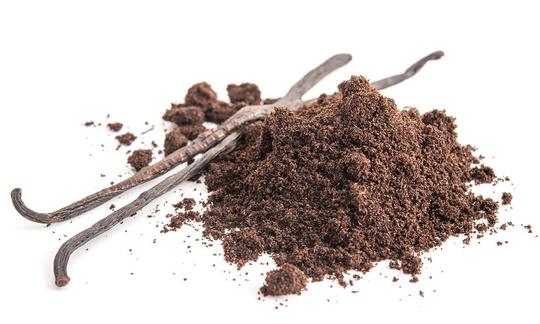

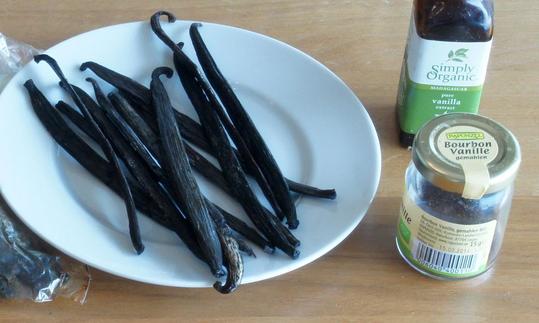

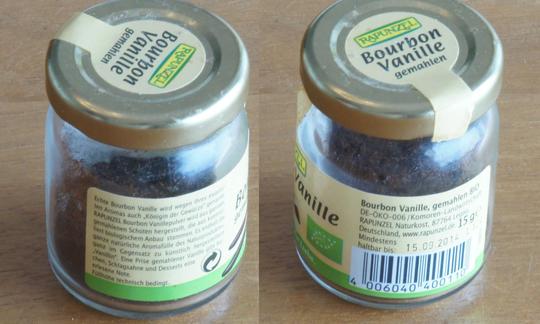

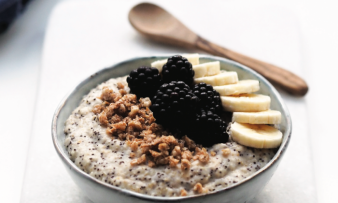
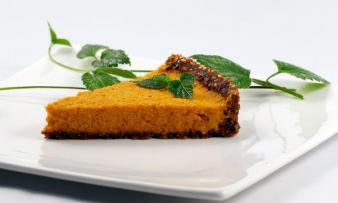
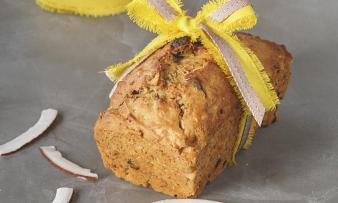





Comments